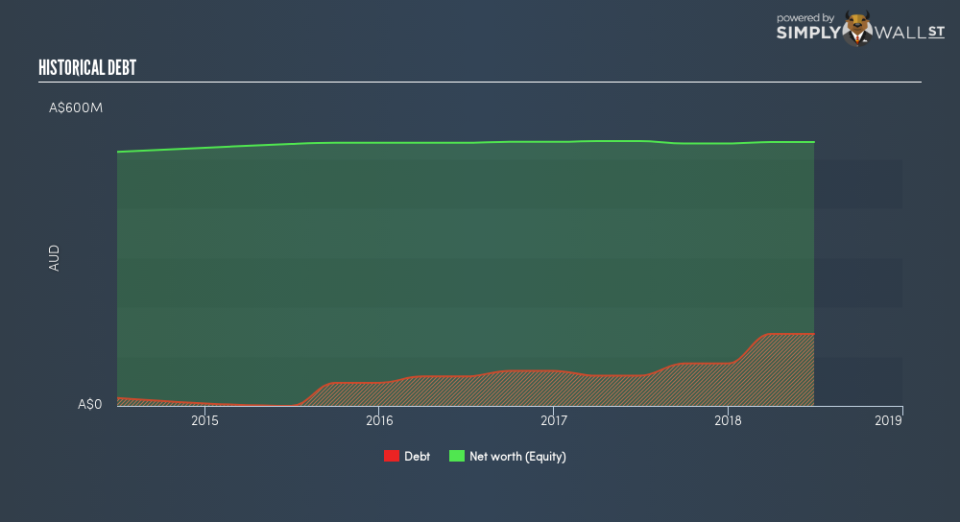Is Japara Healthcare Limited’s (ASX:JHC) Balance Sheet Strong Enough To Weather A Storm?

Japara Healthcare Limited (ASX:JHC) is a small-cap stock with a market capitalization of AU$462.6m. While investors primarily focus on the growth potential and competitive landscape of the small-cap companies, they end up ignoring a key aspect, which could be the biggest threat to its existence: its financial health. Why is it important? Healthcare companies, even ones that are profitable, are more likely to be higher risk. So, understanding the company’s financial health becomes vital. Here are few basic financial health checks you should consider before taking the plunge. However, given that I have not delve into the company-specifics, I suggest you dig deeper yourself into JHC here.
How does JHC’s operating cash flow stack up against its debt?
Over the past year, JHC has ramped up its debt from AU$61.0m to AU$145.5m , which comprises of short- and long-term debt. With this growth in debt, the current cash and short-term investment levels stands at AU$29.2m , ready to deploy into the business. On top of this, JHC has generated AU$35.5m in operating cash flow over the same time period, resulting in an operating cash to total debt ratio of 24.4%, meaning that JHC’s current level of operating cash is high enough to cover debt. This ratio can also be interpreted as a measure of efficiency as an alternative to return on assets. In JHC’s case, it is able to generate 0.24x cash from its debt capital.
Can JHC pay its short-term liabilities?
With current liabilities at AU$606.0m, it appears that the company has not been able to meet these commitments with a current assets level of AU$47.5m, leading to a 0.078x current account ratio. which is under the appropriate industry ratio of 3x.
Can JHC service its debt comfortably?
With debt at 27.3% of equity, JHC may be thought of as appropriately levered. This range is considered safe as JHC is not taking on too much debt obligation, which can be restrictive and risky for equity-holders. We can test if JHC’s debt levels are sustainable by measuring interest payments against earnings of a company. Ideally, earnings before interest and tax (EBIT) should cover net interest by at least three times. For JHC, the ratio of 5.72x suggests that interest is appropriately covered, which means that lenders may be inclined to lend more money to the company, as it is seen as safe in terms of payback.
Next Steps:
JHC’s low debt is also met with low coverage. This indicates room for improvement as its cash flow covers less than a quarter of its borrowings, which means its operating efficiency could be better. In addition to this, its low liquidity raises concerns over whether current asset management practices are properly implemented for the small-cap. This is only a rough assessment of financial health, and I’m sure JHC has company-specific issues impacting its capital structure decisions. I recommend you continue to research Japara Healthcare to get a better picture of the stock by looking at:
Future Outlook: What are well-informed industry analysts predicting for JHC’s future growth? Take a look at our free research report of analyst consensus for JHC’s outlook.
Valuation: What is JHC worth today? Is the stock undervalued, even when its growth outlook is factored into its intrinsic value? The intrinsic value infographic in our free research report helps visualize whether JHC is currently mispriced by the market.
Other High-Performing Stocks: Are there other stocks that provide better prospects with proven track records? Explore our free list of these great stocks here.
To help readers see past the short term volatility of the financial market, we aim to bring you a long-term focused research analysis purely driven by fundamental data. Note that our analysis does not factor in the latest price-sensitive company announcements.
The author is an independent contributor and at the time of publication had no position in the stocks mentioned. For errors that warrant correction please contact the editor at editorial-team@simplywallst.com.

 Yahoo Finance
Yahoo Finance 
